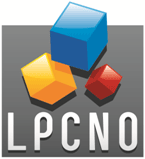Nanostructured hybrid materials for neuromorphic learning
MATERIAL AND SURFACE SCIENCE

Lab: LPCNO
Duration: 5 months full-time internship
6 months full-time internship
Latest starting date: 01/02/2024
Localisation: NCO Team LPCNO INSA Toulouse
Supervisors:
Simon TRICARD tricard@insa-toulouse.fr
This research master's degree project could be followed by a PhD
Work package:
Artificial neural networks inspired by the functioning of the brain (so-called “neuromorphic”) offer great hope for improving computing possibilities. In order to draw conceptual parallels with the development of natural neural networks, the bottom-up approach is aimed at developing new materials that take advantage of the inherent randomness of the systems, towards the elaboration of novel neuromorphic hardware.
The overall aim of this project is to design and synthesize self-assembled nanostructured hybrid materials and operate them in charge transport, to control neuromorphic learning based on percolation with plasticity. Such materials will be prepared by assembling ultra-small nanoparticles and switchable molecules. The randomness of the system will be controlled by chemical tools to create differentiated percolation paths at the mesoscale. A strong attention will be devoted to preserve the molecular switching – plasticity – within the hybrid materials. The molecular entities will be chosen so that their switch can be triggered or modulated by physical stimulations: electric field, temperature, light.
Part of the innovative aspect is the extremely simple, versatile and low-cost approach for device preparation, where the materials, prepared by soft chemistry in solution, can be deposited on any substrate – including flexible substrates – by drop casting.
The project will open a new conceptual approach to research in neuromorphic electronics, where molecular switching will ensure plasticity, and where controlling structural disorder will help for tuning percolation. Nano-structuration in the hybrid materials will allow an ultimate scale-down of elementary components for neuromorphic analogy: few molecules for a synapse, nanoparticles of ~100-200 atoms for a neuron.
References:
(1) Gillet A., Cher S., Tassé M., Blon T., Alves S., Izzet G., Chaudret B., Proust A., Demont P., Volatron F., Tricard S. Polarizability Is a Key Parameter for Molecular Electronics, Nanoscale Horiz. 2021, 6, 271–276.
(2) Tricard S., Said-Aizpuru O., Bouzouita D., Usmani S., Gillet A., Tassé M., Poteau R., Viau G., Demont P., Carrey J., Chaudret B. Chemical Tuning of Coulomb Blockade at Room-Temperature in Ultra-Small Platinum Nanoparticle Self-Assemblies, Mater. Horiz. 2017, 4, 487–492.
Areas of expertise:
Nanochemistry, Coordination chemistry, Self-Assembly, Neuromorphic electronics
Required skills for the internship:
Knowledge in experimental chemistry, openness to physics concepts
